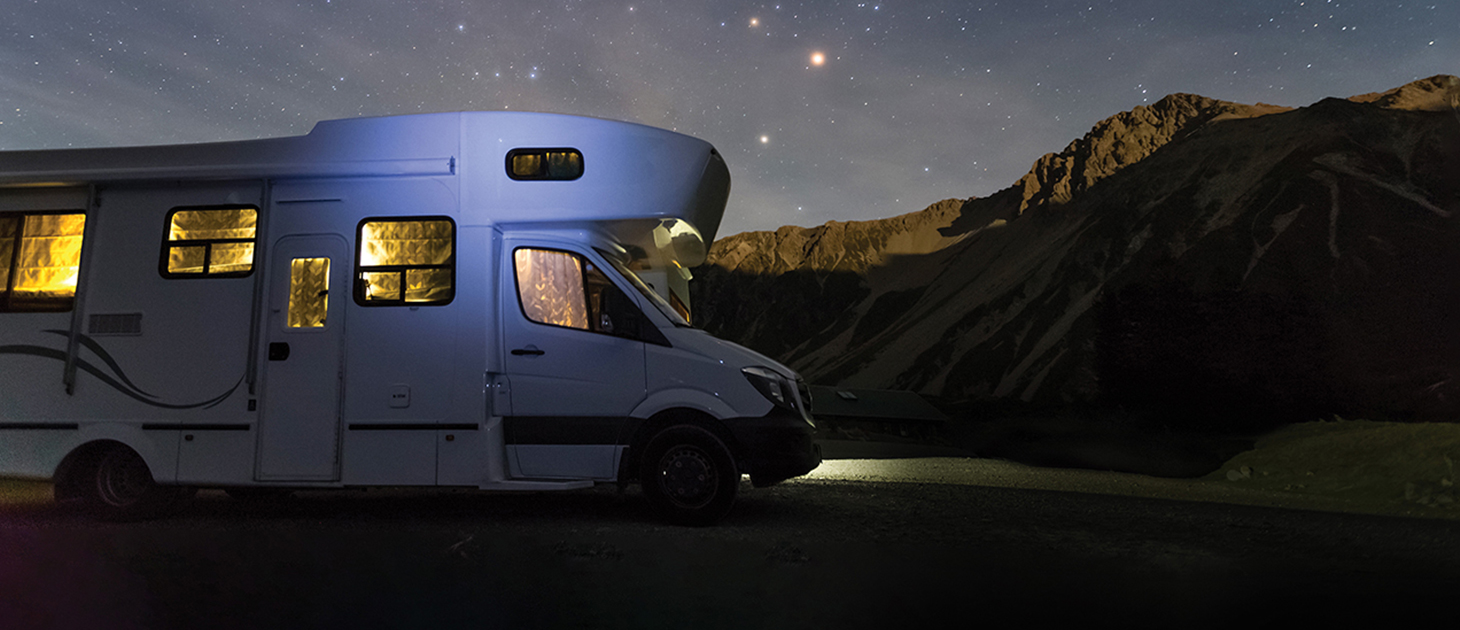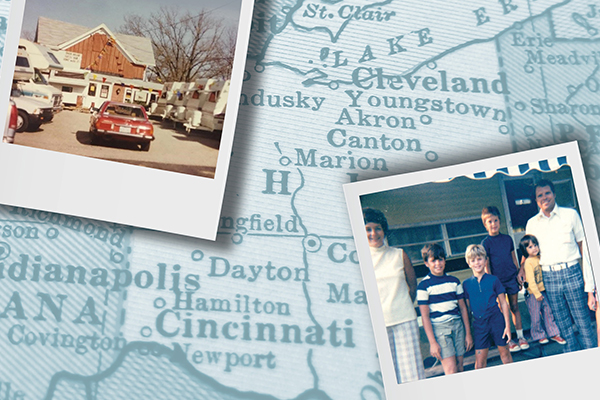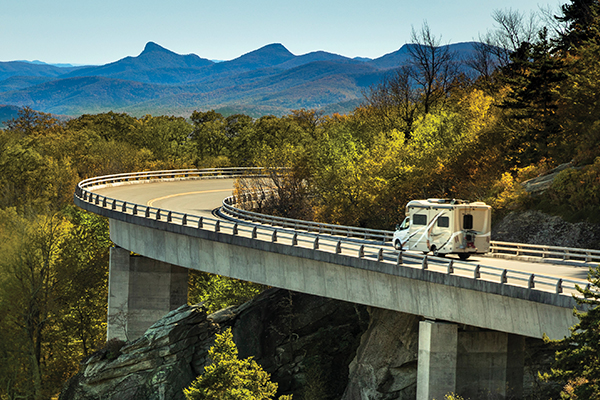Driving through the Night
With the help of private investor Kidd & Company, Family RV Group has grown its geographic footprint while taking advantage of demographic trends to reach new customers.

This story originally appeared in the May/June 2020 print edition of Middle Market Growth magazine. Read the full issue in the archive.
When Chuck Jung was growing up in the 1970s, he hated being asked what his father did for work. Other kids would answer with “engineer” or “banker.” When Jung said his dad sold campers, they’d respond with “funny looks on their faces,” he recalls. “Like, ‘What is that?’” Jung has since joined his family’s chain of RV dealerships, and he’s found that people are now eager to talk about his line of work. But public perception is just one of many changes the RV industry has experienced since Jung’s father started his business in 1968.
Prior to the start of the coronavirus outbreak earlier this year, the RV industry had made significant gains over the previous decade. The number of units shipped rose from 165,700 in 2009 to 406,100 in 2019, thanks in part to the growing ranks of millennial RV owners, who look to recreational vehicles as a way to have new experiences—from tailgating to a weekend road trip. “It’s about lifestyle,” says Bob Ginnan, Family RV Group’s president and chief financial officer. “It’s not just camping anymore.”
Over the last several years, the Jung family business has grown, too. Originally called Colerain RV, it rebranded as Family RV Group after investment firm Kidd & Company acquired it in 2016. Kidd & Co.’s investment has helped Family RV grow its geographic footprint to 12 locations through acquisitions, while making operational improvements and finding new ways to serve customers. In the years since Kidd & Co. invested, the company’s revenue and head count have more than doubled.
But over the past several months, the coronavirus pandemic has emerged as a new threat. The public health and economic crises have put pressure on many industries, including RV dealerships, creating a challenge that Family RV is tackling head on.
Motorhomes for Millennials
In the years before Kidd & Co.’s investment, Colerain RV consisted of three dealerships in Ohio and one in Indiana. Jung, his brother and a business partner managed all four locations.
At the time, Jung was watching an industrywide trend toward consolidation, visible among original equipment manufacturers and parts suppliers, as well as RV dealerships. When his father opened Colerain’s first location, in Cincinnati, he had more than a dozen local competitors. Today, Family RV Group is the only one left.
Family RV Group
Year Founded: 1968, as Colerain RV
Headquarters: Cincinnati, Ohio
Number of Locations: 12
Brands: Candy’s Family RV, Colerain Family RV, Dunlap Family RV and Northside Family RV
Investor: Kidd & Company
It was against this backdrop that, in 2014, Jung had an opportunity to purchase a fifth dealership. But he knew that he and his partners weren’t equipped to manage five locations, prompting them to seek an outside partner—Kidd & Co. “They had the knowledge for creating a platform that manages multiple locations, where you’re not driving yourself nuts,” Jung says.
“They had the knowledge for creating a platform that manages multiple locations, where you’re not driving yourself nuts.”
Chuck Jung
Executive Vice President, Family RV Group
Although recreational vehicles weren’t top of mind for Kidd & Co. when it learned of Colerain through one of its portfolio company owners who knew Jung, the firm decided to take a look.
“It wasn’t as if we sat at a whiteboard and came up with the investment thesis that RVs were going to be a trend going forward. But we’re always interested in learning about new businesses,” says Ken Heuer, principal at Kidd & Co., a family office that makes direct private equity investments in lower middle-market companies.
One development boosting the industry is an influx of younger buyers. Those between 35 and 44 years old accounted for 20% of RV owners in 2018, up from 18% in 2015, based on data collected from RV registrations. Those aged 25 to 34 made up 8% of the market, up from 5%.
Prior to the coronavirus outbreak, the RV Industry Association projected that the number of RV owners aged 30 to 45 would reach 72 million by 2025, 13% higher than in 2015. Meanwhile, the ranks of baby boomers are expected to grow, too. The number of RV customers aged 55 to 74 could reach 79 million by 2025, a 15% increase from 2015.
Those dual trends spell opportunity for RV dealerships. “While at the same time that you’ve got people generally living longer, by the same token, you’ve got people getting into the lifestyle earlier,” Heuer says.

KIDD IN AN RV STORE
When Kidd & Co. was considering investing in the business, Heuer appreciated that Jung and his partners had a demonstrated track record of acquiring and integrating three dealerships. It showed they were knowledgeable and ready to scale. Before the deal closed, Kidd & Co. installed the company’s first chief financial officer, paving the way for even more M&A.
According to Ginnan, who joined as the company’s second CFO in January 2018, Family RV starts by looking for dealers with brands that it already carries, or would like to. From there, it evaluates the management structure, what the dealership is doing well and where Family RV might be able to help.
The dealership’s attitude toward customer service and satisfaction is another important consideration—Family RV wants to make sure it meets the high standards it sets for itself. “We’re looking for loyal customer bases, which goes to the culture and values of the dealership and its reputation,” Ginnan says.
The company’s acquisitions have given it a broad geographic footprint. Today, its 12 locations loosely follow the I-75 corridor: three in Ohio, two in Indiana, three in Kentucky, three in Tennessee and one in northern Georgia.
“It’s about lifestyle. It’s not just camping anymore.”
Bob Ginnan
President and CFO, Family RV Group
“We’ve actually had people that have moved their families to another city, and guess what? We happen to have another location there, so they stay working with us,” Jung says. “Our competitors, most of them can’t do that.”
Family RV’s stores tend to be within four hours from another location, making them easier to manage. The company has looked at opportunities in California, Washington, Colorado and Arizona, but Heuer says they’re not interested in a single, far-flung location. If they were to enter a new market, they’d likely create a similar cluster of stores, located in a growing metropolitan area.
Heuer sees no shortage of opportunities for dealership acquisitions. “They command low multiples to begin with, but there’s so much opportunity to improve their revenue and profitability by managing them much more professionally,” he says.
According to the National RV Dealers Association, about 75% of its 1,200 retail members have fewer than four locations. Although dealer consolidation hasn’t reached the level of the broader automotive industry, it’s beginning to move in that direction. “There are still a lot of independent operators looking for an exit strategy,” says Phil Ingrassia, RVDA’s president, adding that he regularly receives calls from investors with questions about the industry.

At the time of Kidd & Co.’s investment in 2016, Colerain was one of the first RV dealerships to partner with private equity. Since then, other firms have entered the industry. In one notable example, Redwood Capital Investments partnered with a group of executives in 2018 to form RV Retailer LLC, which now has more than 1,200 employees across seven states and more than $1 billion in annual revenue. In February 2020, it announced plans to acquire its 30th location. Another privately held company, Campers Inn RV, also has used M&A to expand in recent years, growing from 10 locations in 2015 to 27 at the end of 2019.
Over the last five years, two private equity-backed dealerships have gone public: Camping World Holdings, formerly owned by Crestview Partners, and Lazydays Holdings Inc., which Wayzata Investment Partners LLC acquired in 2009 before selling to Andina Acquisition Corp. II in 2018.
“All of this M&A activity speaks to the interest from public market and private investors to get into a growing industry with attractive investment and consolidation opportunities,” Heuer says. “Despite the recent COVID-19-related market disruption, I believe the long-term attractive characteristics that drew us, as well as many others, to this industry remain present.”
Home on the Road
Through its own M&A activity, Family RV Group has assembled a collection of dealerships that operate under four brand names: Candy’s Family RV, Colerain Family RV, Dunlap Family RV and Northside Family RV. At each site, the company aims to provide an experience that shoppers, particularly millennials, have come to expect. Customers can now text the sales or service department to ask questions. “We are continually evaluating the use of technology across our dealership operations, looking for ways to become more efficient,” Jung says. That includes connecting salespeople’s cell phones to inventory and experimenting with iPads for service department workers.
“While at the same time that you’ve got people generally living longer, by the same token, you’ve got people getting into the lifestyle earlier.”
Ken Heuer
Principal, Kidd & Company
Case studies show that over a lifetime, an RV owner might purchase anywhere from six to 10 recreational vehicles. They upgrade to new models or look for different features to fit their lifestyle at the moment—whether they’re a single adult, married with kids or empty-nesters.
Price points and features vary by type of vehicle. Towable RVs, which hook up to the back of a car or truck, retail for between $10,000 to $100,000 or more and represent about 85% of Family RV’s vehicle sales. The company’s motorized RVs range from $60,000 to $400,000.
More expensive models include high-tech amenities like sound systems integrated with Amazon’s Alexa, and televisions that can tuck behind cabinets to save space when not in use. A customized RV could cost upwards of $1 million, but Family RV doesn’t carry products that expensive, according to Ginnan.
In an industry where products undergo significant wear and tear after they leave the lot, providing support after a sale is critical. “These are houses that go down the road and bounce around, and things happen,” Ginnan says. “You want to make sure you keep your customers out there doing what they want to do.”
That’s a challenge for RV dealers, because their product has all of the mechanical elements of a car, along with features like cabinets and refrigerators—and in some cases, fireplaces and flat-screen TVs—that tend to break down over time.

To get ahead of potential problems, Family RV trains its staff to ask questions about how customers use their vehicles. “Our philosophy is to be experts in the industry for the RV enthusiast, which simply means we need to be knowledgeable at all points of contact with our consumers,” Jung says.
For example, if someone comes in for warranty work on a towable RV, the service representative might learn that it’s used in the Smokey Mountains, away from camp sites or level surfaces. In that case, the RV’s default set of stairs will cause the towable to move when someone enters or exits. The Family RV rep can suggest stairs whose height can be adjusted to the ground, so the towable doesn’t shift. That can help ensure customer safety, Jung says.
Riding out the Storm
From the start, Kidd & Co. was impressed by Family RV Group’s ability to thrive during the last recession. According to Heuer, Jung and his partners were conservative in capitalizing their business. Even as other companies were struggling to survive, the Colerain team was buying low-priced inventory from other manufacturers that were going out of business. “By 2010, they were very well-positioned and were making even better margins than they had going in because of how they had weathered that storm,” Heuer says.
“These are houses that go down the road and bounce around, and things happen. You want to make sure you keep your customers out there doing what they want to do.”
Bob Ginnan
President and CFO, Family RV Group
The company’s diverse inventory helped, too. There are a wide range of RVs that span homes on wheels to trailers towed behind a car or truck. About 80% of the units sold across the industry fall into the latter category. During a recession, large motorized RVs present a liability for a dealership, due to their cost. “Nobody was buying those big units when you didn’t know if you had a job the next day, or whether you could get credit,” Heuer says. With a mix of RV styles, the company was able to shield itself as consumer preferences changed.
That experience will help Family RV face the enormous economic repercussions of the COVID-19 outbreak. As of mid-April, the number of cases of the disease continues to climb in the U.S. and residents are being encouraged to stay home.
“When there is uncertainty in the economy and general panic like we are seeing now, the very near-term impact to our business is that consumers may be worried about bigger issues than buying an RV, like their health and the stock market,” Heuer says.
At the same time, there are factors that may favor the RV industry: low interest rates, “social distancing” and a sharp uptick in remote work.
Heuer notes that Family RV has a daily management meeting to stay on top of the latest developments and will continue to adapt its selling and service practices to protect the safety of its employees and customers.

At press time, the service departments at each of Family RV’s dealerships remain open, while their showrooms are either open to consumers or accessible by appointment, depending on the site. Several customers in the medical field have recently purchased units to self-quarantine from their family, even if just to park in the driveway.
Having weathered a downturn before, Heuer is optimistic about Family RV’s future. “Since the longer-term trends are still very favorable, any near-term impact will hopefully be shortlived and will likely just push pent-up demand a little more into the future,” he says.
S.A. Swanson is a business writer based in the Chicago area.


